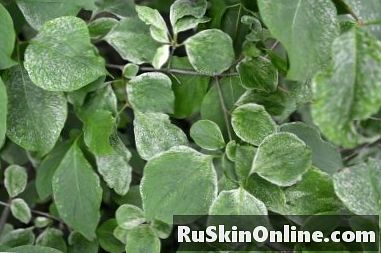
Content
- Lilac - The most common diseases and how to treat them
- blossoms
- leaves
- Leaves are light green
- Leaves have brown spots
- Leaves have a whitish coating
- Shoots, branches and trunk
- root
- Tips

On the leaves, diseases are usually recognized first
Lilac - The most common diseases and how to treat them
Although the lilac (Syringa) is considered quite robust and insensitive to diseases, but it can still catch him of course. The various pathogens - including fungi as well as viruses and bacteria - are widespread in nature. They can only try to make the lilac strong and resistant to an infection by a suitable location, a sufficient planting distance and a good, appropriate care.
blossoms
If the lilac does not bloom, there is not always a pathogen behind it. In most cases, the location is just too dark or the plant does not get enough nutrients. Also a possible waterlogging (caused for example by too frequent watering or too much rain) can be behind it. In these cases, a change of location or a supply of fertilizer helps.
leaves
In many cases, diseases make themselves noticeable on the leaves, and in later stages, other parts of plants, such as branches and stems may also be affected.
If the lilac gets yellow leaves, there are usually problems with the location: Either the plant is too dark, too wet (waterlogged) or it lacks nutrients. Replant them or provide them with suitable fertilizer.
Leaves are light green
Light green leaves with dark green leaf veins are a clear indication of iron deficiency. The so-called chlorosis treat you with the gift of a fertilizer. In addition, you should check the location, because this phenomenon occurs mainly on lilac unsuitable soils. A possible mulching (for example with bark mulch) should also be removed.
Leaves have brown spots
Brown spots on lilac leaves can look very different and therefore have different causes. Mushrooms are mostly behind it: Ascochyta syringae (large, brown-rimmed spots), Gloeosporium syringae (very large, brown spots), Heterosporium syringae (greyish brown spots with a velvety surface) and Septoria syringae (yellow-brown spots). Furthermore, the bacterium Pseudomonas syringae causes first light to dark brown leaf spots and finally a shoot rot. Appropriate measures in all cases: Remove or cut off infected parts of the plant, remove fallen leaves and spray lilac with field horsetail spray. In case of heavy infestation, a copper spray from the garden shop helps.
Leaves have a whitish coating
Mildew fungi are quite common in lilac. Special measures are basically not necessary, but you can prevent infestation by preventive spraying with horsetail or garlic in spring. Diseased plant parts are cut back and disposed of.
Shoots, branches and trunk
Wilting symptoms of lilac can also have very different causes. For example, the lilac epidemic caused by the bacterium Pseudomonas syringae and the wilting disease caused by Verticillium fungi are common. In both cases, you should immediately cut down diseased parts of plants to healthy wood and dispose of the clippings in the trash or burn.
root
You must also take care with the hake, which likes to infest old lilac and causes a root rot. An infection only helps to clear the tree and eat the mushrooms.
Tips
Many of the symptoms described do not necessarily have to be caused by pathogens. Even some pests like to feed on lilac.